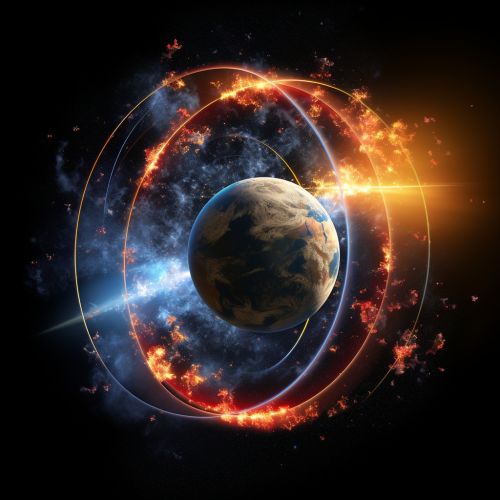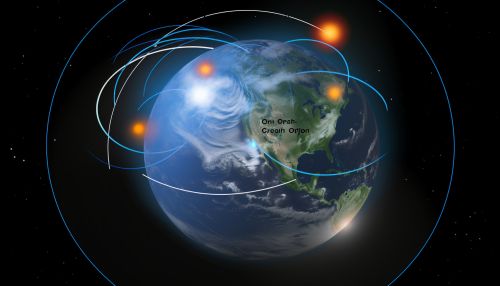Chapman Cycle
Overview
The Chapman Cycle is a series of chemical reactions that describe the creation and destruction of ozone in the Earth's stratosphere. It was first proposed by British scientist Sydney Chapman in 1930. The cycle is a fundamental concept in atmospheric chemistry, providing a scientific explanation for the existence of the ozone layer and its variations.


The Chapman Cycle
The Chapman Cycle consists of five primary reactions, some of which are photodissociation reactions, meaning they are driven by sunlight. The cycle begins with the dissociation of molecular oxygen (O2) into individual oxygen atoms (O) by solar radiation. These atoms can then combine with other O2 molecules to form ozone (O3). Ozone can be dissociated by solar radiation into O2 and O, or it can react with an oxygen atom to form two O2 molecules.
Reactions
The five primary reactions of the Chapman Cycle are as follows:
- O2 + hν → 2O (λ < 242 nm)
- O + O2 + M → O3 + M
- O3 + hν → O2 + O (λ < 320 nm)
- O3 + hν → O + O2 (λ < 320 nm)
- O3 + O → 2O2
In these reactions, M represents a third body (typically N2 or O2) that absorbs the excess energy of the reaction. The symbol λ represents the wavelength of light, with the numbers in nanometers indicating the threshold wavelength below which the reaction can occur.
Implications for the Ozone Layer
The Chapman Cycle explains the high concentration of ozone in the stratosphere, a region of the atmosphere located approximately 10 to 50 kilometers above the Earth's surface. This region, known as the ozone layer, absorbs the majority of the Sun's harmful ultraviolet (UV) radiation, protecting life on Earth from its damaging effects.
The balance of ozone creation and destruction in the Chapman Cycle is sensitive to changes in environmental conditions, such as temperature, pressure, and the intensity of solar radiation. Variations in these factors can lead to fluctuations in the thickness and distribution of the ozone layer.
Role in Ozone Depletion
While the Chapman Cycle provides a basic framework for understanding the behavior of ozone in the stratosphere, it does not account for all observed phenomena. For example, it cannot explain the severe depletion of ozone over the polar regions, a phenomenon known as the ozone hole. This discrepancy led scientists to propose additional reactions involving man-made chemicals, particularly chlorofluorocarbons (CFCs), which can catalyze the destruction of ozone.
